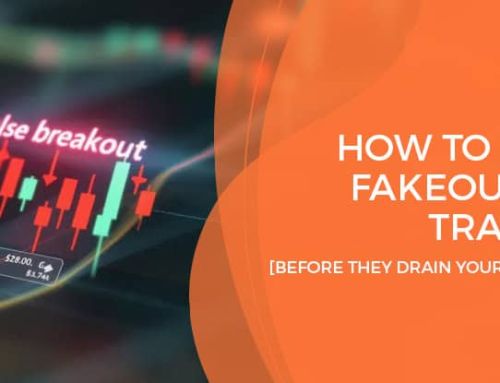By Cameron Buchanan (Featured in 'Your Trading Edge' Magazine June 2020 Edition)
Director and Professional Trader of the International Day Trading Academy
I am writing this article because 'bailing out too early' is a trading behaviour that can be overcome with some fundamental principles, practice and when the moment arrives, reflection by journaling post trade. This subject is also very relevant for me because it is one of the trading behaviours I have had to deal with, as I am constantly working on being very conscious of it in my trading.
Firstly, let's analyse the concept of bailing out too early.
Bailing out of a trade generally happens when a stimulus occurs that makes the trader react out of fear and close the trade. In the moment the trader does not know what the outcome was to be, however, something spooked the trader to feel like they had made the wrong decision to enter in that particular direction.
Now we won't know the truth
As time will tell if the decision was correct or not, however let's assume it was the incorrect decision to bail out prematurely and the trade went to the profit target. Now we can confirm that the trader bailed out too early. Nevertheless, regardless of the result the reaction from the fear attributed to poor trading psychology. Now the trader will only know if it is a problem if they observe in their journal that this behaviour contributes to negative outcomes more than 70% of the time.
Rather than labelling it a trading psychology issue, I believe it is more of systemic issue with the trader's trading plan, trading skills and experience. Traders are quick to beat themselves up and say they have bad trading psychology. However, with a logical plan on how to deal with these situations and accurate data collection, the trader can overcome this behaviour affecting their profitability.
So we need the facts.
By reflecting on your trading behaviour what is the common cause of this reaction 'to bail'. If you journal your trades, continue to observe what leads up to these decisions. From my experience, I execute on 5 minute charts so one common stimulus for me, is when a 5 minute candle moves against my position very quickly and on minimal volume. The initial thinking would be, this is a volatile move, and this is going to continue to go through my stop. So I am already playing out a scenario that might have happened in the past, but how do I possibly know it is going to occur this very time?
Let's look at a specific example of a 5 minute futures day trade on the Micro SP500 Futures contract (picture at top of page), and see how this management plays out. I had a signal confirm short (sell) at the close of the 10.30am candle. It was one of my favourite set ups. I had many reasons to take this trade such as buyer failure for 15 minutes at the orange resistance wave, continuation pattern off the resistance, my favourite 3 candle turning point pattern (which is an early warning of a turn typically), and no potential supporting levels until the S2. Plus, I had better than a 1:1 risk to reward trade. $50 at risk for a $77.50 reward. So plenty of reasons to sell this market to the target (1 point before the S1). When I entered, I missed my preferred entry by 2 ticks and entered at 2778.75 with 2 contracts. Note – this as my perfectionist trait kicked in. This was the first chink in my psychological armour. Market spent 10 minutes in profit, then the 10.45 candle opens and moves quickly against my position in the first 2 minutes that spooked me as I thought I was on the wrong side. Therefore, I quickly closed the trade at 2782.50 from fear of loss. I then watched the trade go to my initial target 15 minutes later. I felt really angry at myself. I missed a great opportunity because I did not trust my plan and I had another chance to re-enter reinforcing the direction.
So, in observation, how could this have been managed better for my preferred result?
In my opinion, these are some very important trading skills that if followed in a trading plan will enhance a trader's performance:
- There are always reasons to take a trade and reasons not to take a trade. If deciding to enter the market, the reasons to take a trade must always outweigh the reasons to not take the trade. In the example I had more logical reasons to take the trade, and no reasons not to take the trade.
- Closing the trade can never be based on fear of loss. One must have more logical reasons to close the trade than to stay with the trade. In the Figure 1.0 short trade, this never occurred. In fact in the example I had another reason after I closed to get back in and stay short.
- Build up your chart reading skills. Know what other traders are thinking. You don't need to know every trading strategy that has ever been created, but get to the most important trading concepts that still drive market behaviour. Concepts around support and resistance price levels and basic candle stick patterns. These easy to learn concepts can easily be found in books and YouTube.
- Trade within a comfortable risk profile and accept the risk, as the great Mark Douglas said in his many books on trading psychology.
These very practical concepts must be employed when trading, though they must be consciously present in the trader's mind when they are under pressure, especially when the trade starts moving against the entry price. These concepts will naturally develop a robust trading psychology that is based on the logic of your trading plan and your statistics. Ultimately, it will assist you to stay in more winning trades and result in higher profit.
On the trading psychology subject, I believe it is imperative to understand our conditioned 'dualistic thinking' and how this affects our decisions and consequential behaviour when trading. Dualistic thinking is a fast way of thinking where we constantly judge events as good or bad, or right vs wrong. This quick judgemental mind is a very interesting study and one I encourage you to observe. These engrained ways of judging outcomes and behaviours as right and wrong, or good and bad, will never serve a day trader because we spend too much energy on wanting to be right and good, and avoiding being wrong or bad. This search for perfection cannot work in the trading environment, because you can never know the outcome of a trade at time of entry. What the trader can only control is there decisions, and these decisions should only be based on what is clear and logical to the trader. The reasons for being in a trade within your risk are all the factors that really matter.
To find out more on Day Trading, join me in my next live Learn to Trade Webinar



